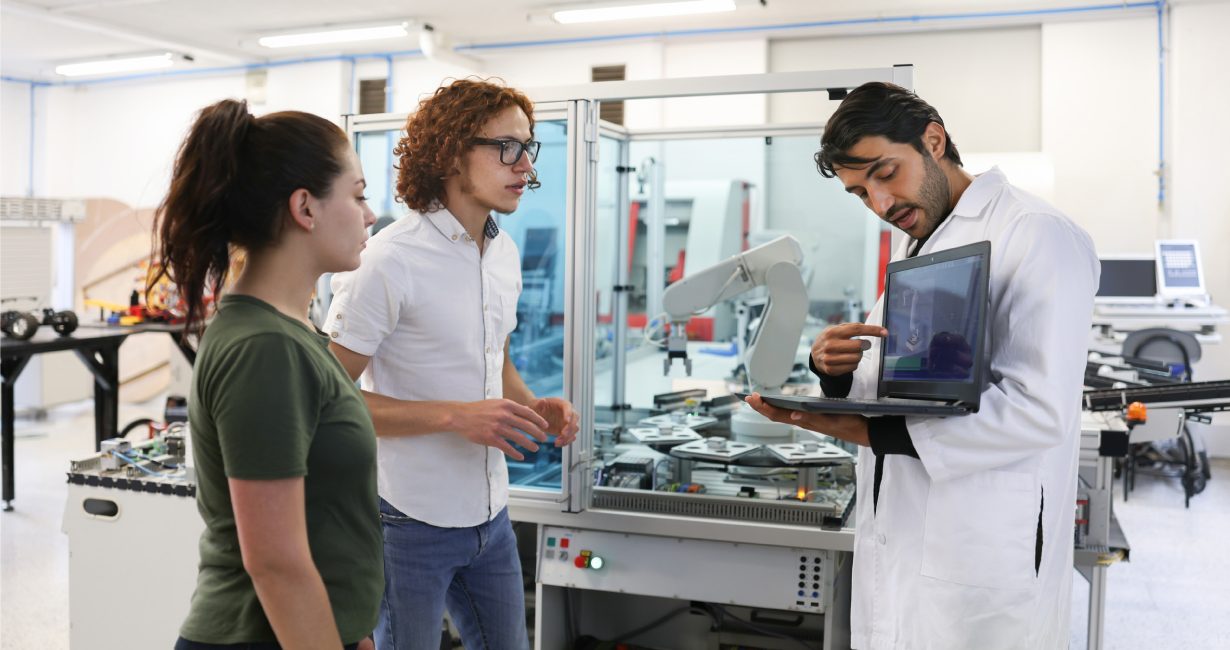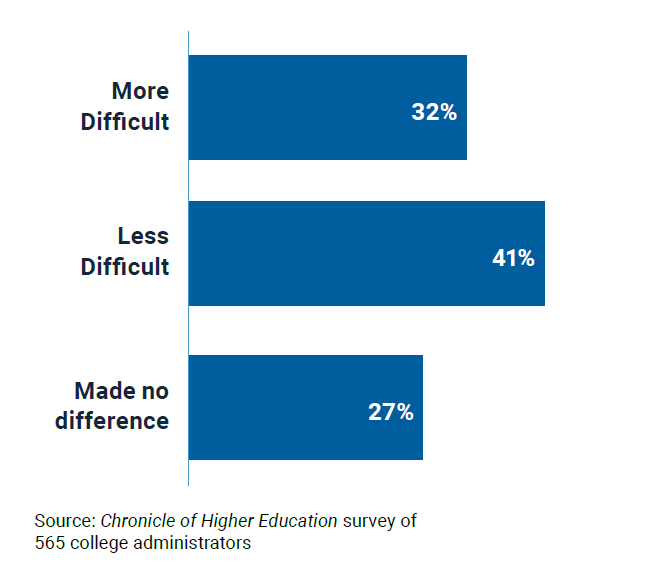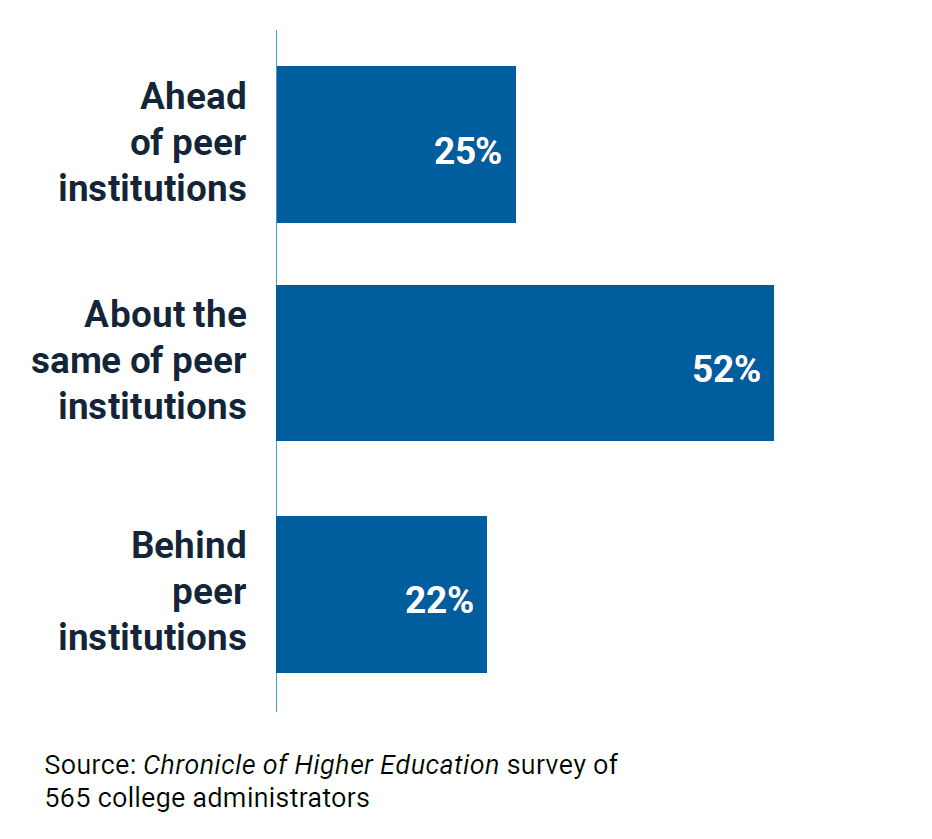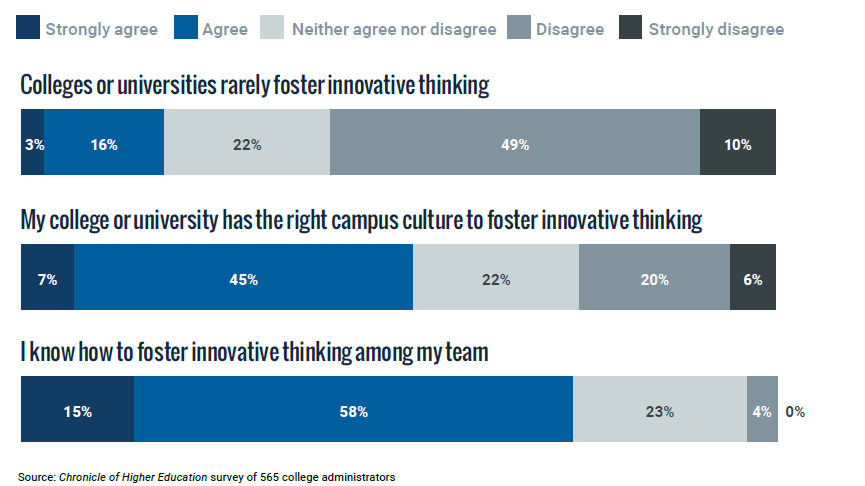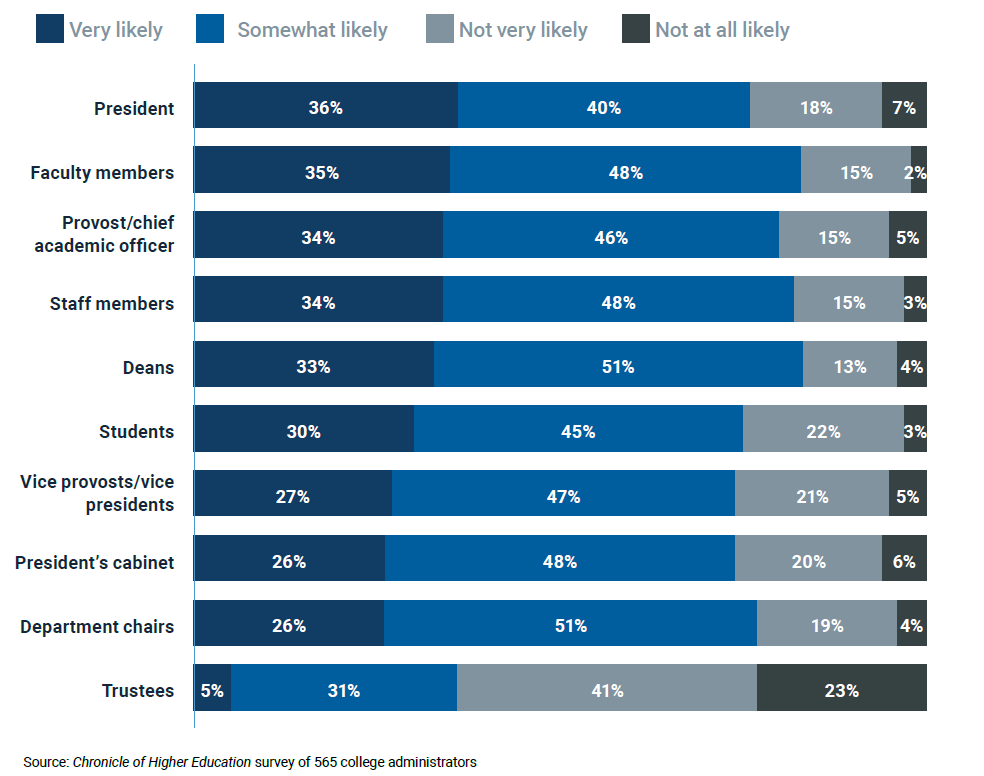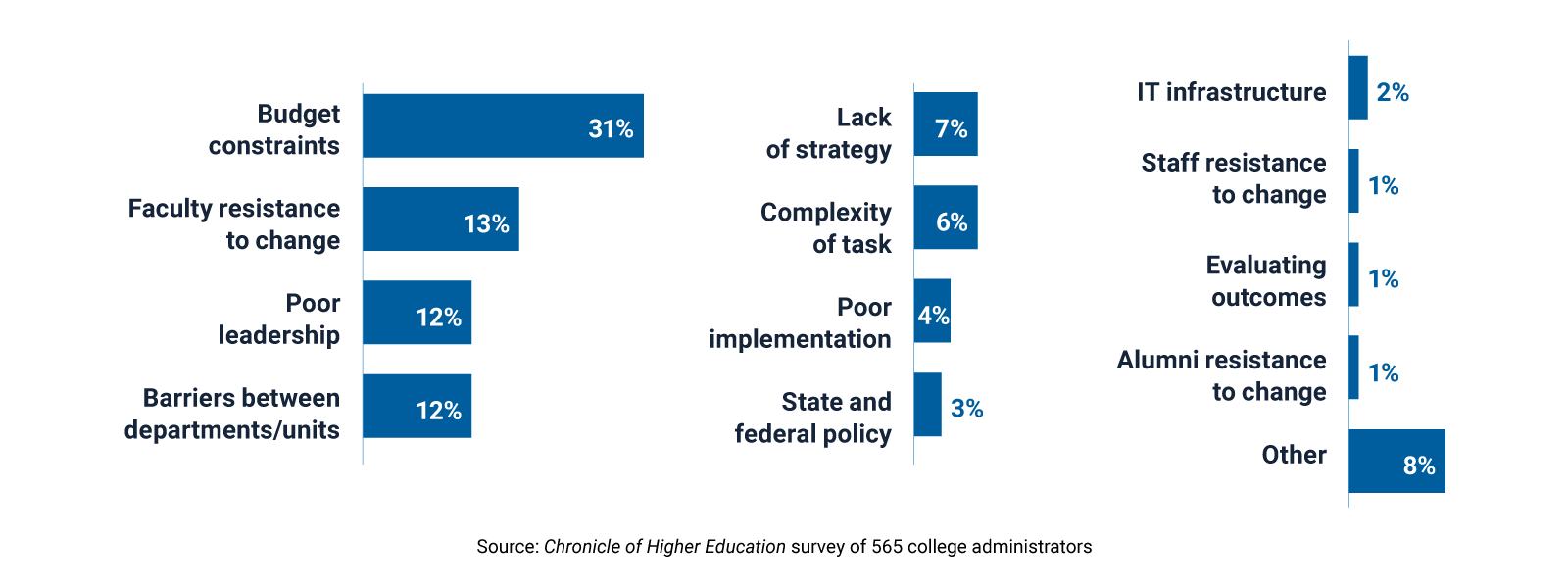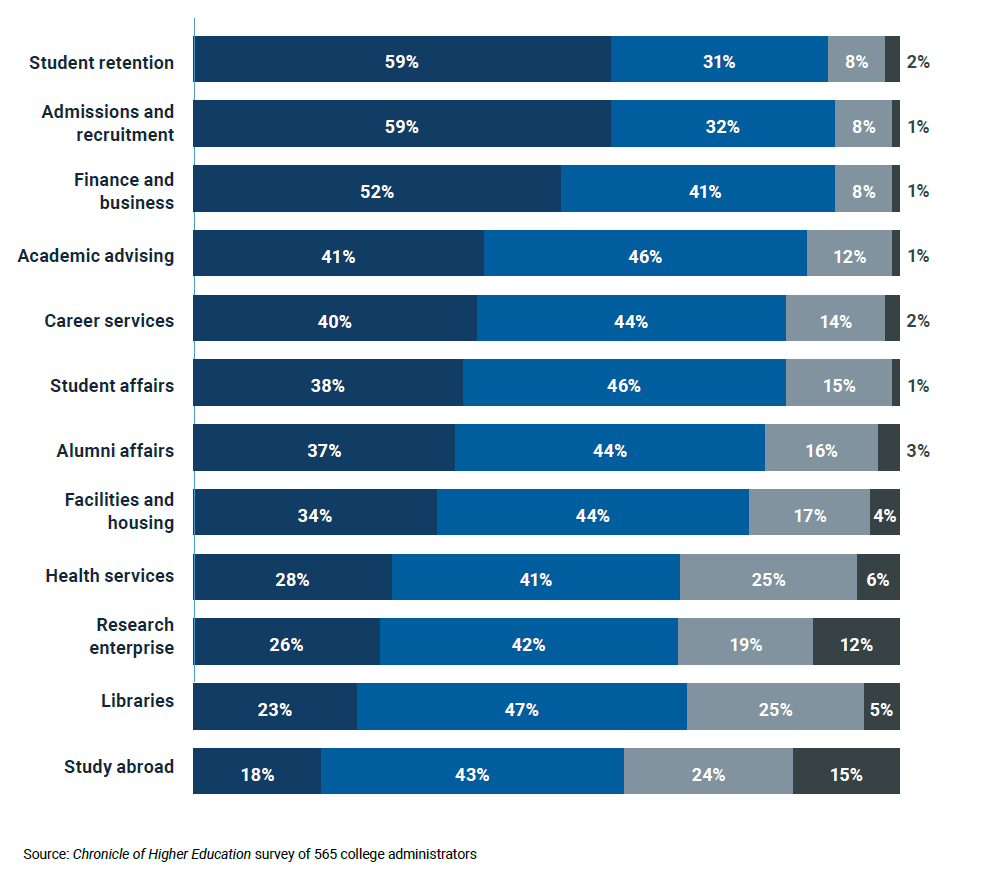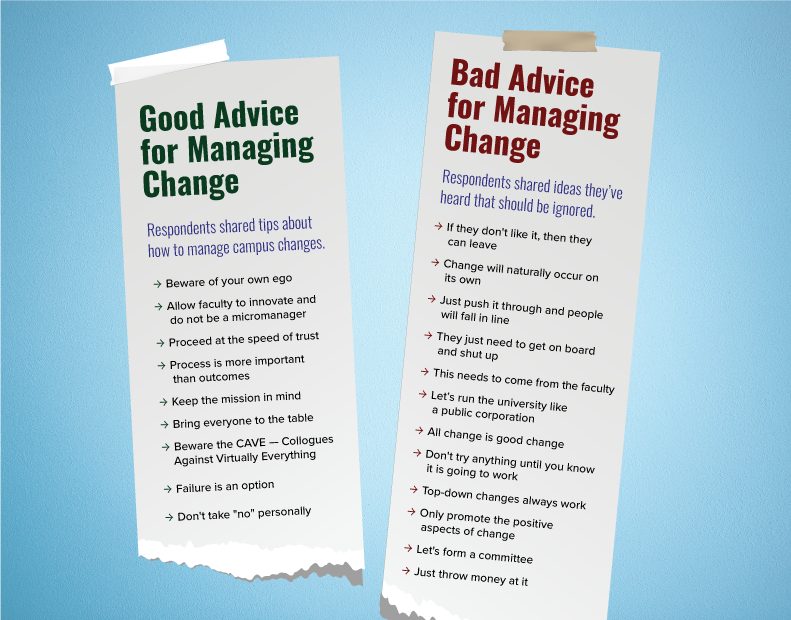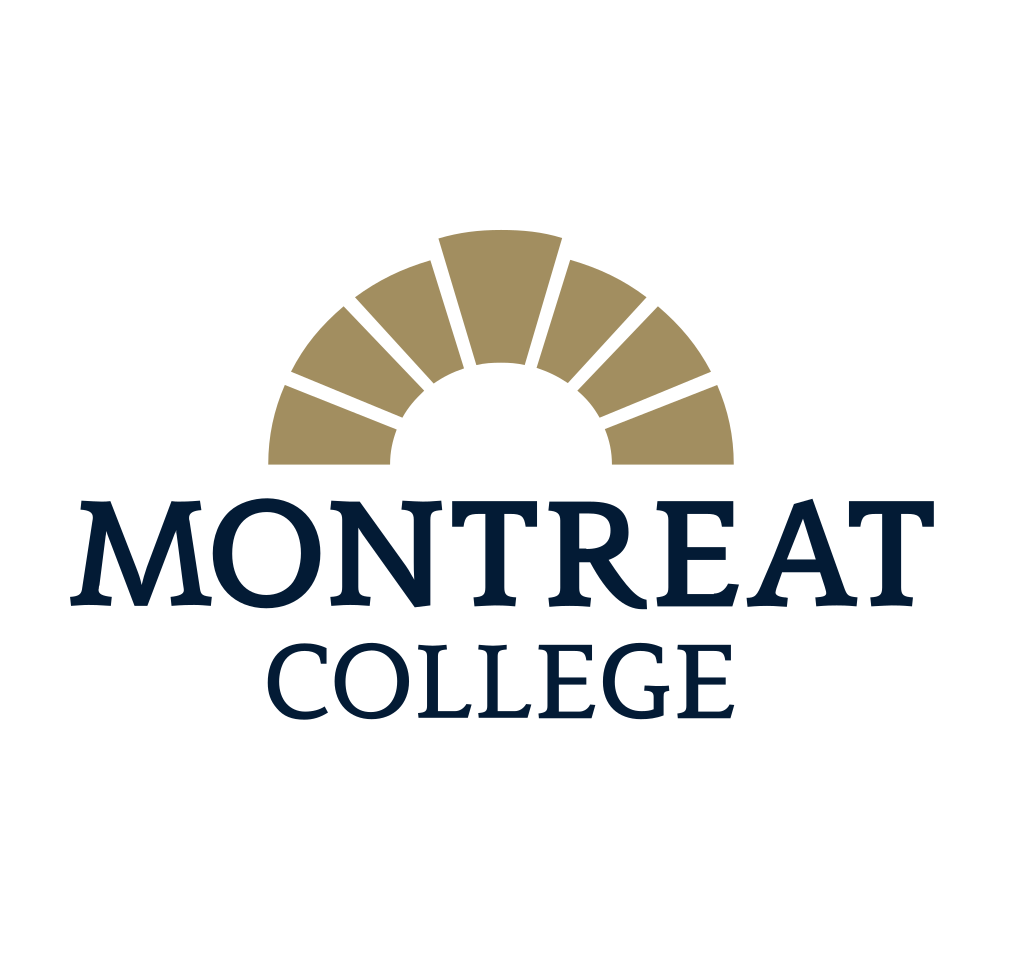Stepping Up to Innovate College Administrators Assess Higher Ed’s Ability to Change Itself
The overall college retention rate in the United States dropped sharply in Fall 2020, and its rebound has been slow.
Students are navigating many challenges, from financial burdens and mental health struggles to simply getting the right support they need to complete rigorous coursework. Now more than ever, students are struggling to complete their degrees – and it’s time to take action.
Keeping students engaged and on tack requires innovative solutions.
Read “The Essential Guide to Student Engagement” to learn how proactive intervention can change the story for your institution.
The Covid-era college has responded innovatively to the pandemic, is poised to continue innovating, and is staffed by people across campus who foster meaningful change.
So says a group of college administrators in answers to a survey conducted by The Chronicle of Higher Education.
Survey results show strong agreement among college leaders that Covid-19 has sped up the need for campus innovation. More than four in 10 respondents (41 percent) say the pandemic made innovation less difficult on their campuses, compared with a lower portion who say that Covid made it more difficult (32 percent) or that it made no difference (27 percent).
Though colleges have often been accused of being slow to change, respondents report a willingness to do so.
Most campus officials (59 percent) disagree with the statement “Colleges or universities rarely foster innovative thinking” — an indication that most view such thinking as commonplace.
Colleges maintain a campus culture that advances innovation, according to a slim majority (52 percent). But respondents themselves say they possess the ability to spur forward-looking ideas at a high rate — 73 percent.
The survey asked officials to assess which campus roles are likely to hatch innovative ideas. A host of campus roles, including faculty members, college presidents, and students, rate highly in that regard — especially deans (84 percent), who were rated the highest. Out of a list of nine campus roles rated, trustees (at 36 percent) were ranked the lowest.
Most colleges are keeping up with each other as they innovate, according to survey respondents. Slightly more than half (52 percent) say their institution fosters innovative thinking at about the same rate as peer institutions, while 25 percent say their institution is better at it than others, and 22 percent report they lag.
At the same time, respondents report several roadblocks to innovation, including financial issues and the challenges that come with managing change. Finances, far and away, are the leading cause of concern. Nearly one in three officials say that budget constraints are the biggest obstacle to innovation on their campus.
Respondents cite a continuing need for funding to help innovate a wide variety of campus functions. Finance and business operations, admissions and recruitment, and student retention top the list of areas
where innovation is needed.
But college leaders’ worries regarding innovation transcend the dollar. Getting staff members and students on board with innovative efforts remains a prime concern. Nearly three in four say that managing change is one of the toughest challenges they face.
The survey, conducted in March and April 2022, was underwritten by Watermark, a software company that works to improve student outcomes. It was designed to help college leaders understand where to look for
change and how to manage it. A total of 565 administrators responded to the emailed survey, and they represent private and public four-year colleges as well as two-year institutions nationwide.
Two years ago, when asked to respond to a pandemic, colleges rapidly expanded teaching options, created more hybrid-learning opportunities, and digitally upgraded many student services. Which is to say that they innovated — and on a dime.
Long considered resistant to changes in how they teach and run their operations, colleges did more than flip classrooms. They flipped the script — spending considerable time, energy, and money to keep themselves open for business and to continue educating. Many purchased or upgraded tech systems to streamline their operations and offer students more services and flexibility in learning. Others expanded or created new programs, both degree and nondegree, to meet the needs of students faced with their own pandemic challenges.
That rapid transformation, not just technological but cultural, shows that institutions can make sweeping changes when forced to. The question now is whether innovation will become a habit for most colleges — a regular dimension of their thinking — or whether widespread Covid-era transformations represent little more than a one-shot deal.
Many colleges have put federal Covid-relief funding to work upgrading various technologies. The windfall from the $153-billion program might help to give them a leg up on developing a lasting and workable theory of innovation.
While American society entrusts colleges to produce cutting-edge innovations — everything from regional business incubators to medical advances and other research breakthroughs — those institutions have traditionally trailed other economic sectors when it comes to transforming themselves into leaner, more competitive entities that are ready to face the future.
Experts on innovation have long seen this reluctance to leap toward operational change as a detriment to colleges’ longterm health. Clayton Christensen, the late Harvard Business School professor and economist, famously predicted in 2017 that half of all higher-ed institutions would be forced to close within a decade because of a failure to embrace innovation. He advised them to create their own corporate-style research-and-development teams to bump up their chances for survival.
Some institutions, such as Arizona State University, Southern New Hampshire University, and the online-only Western Governors University, heeded the trendlines and have worked to become examples of the “creative disruption” that Christensen called for.
Because those institutions have embraced innovation in myriad ways, such as by offering more flexibility in learning modes or expanding programs to include adult learners, they have created new streams of revenue and spurred enrollment gains.
Especially during the Covid era, as colleges face more budget and enrollment challenges, innovation is not a luxury but a necessity. Many colleges have put federal Covid-relief funding to work upgrading various technologies. The windfall from the $153-billion program might help to give them a leg up on developing a lasting and workable theory of innovation.
Or not. Innovation remains a moving target. Colleges that made sweeping tech changes before the pandemic, for example, now have a slew of options, including the cloud, to improve how they manage, store, and use their data. Innovations centered on developing new teaching and learning systems have also morphed at an ever-accelerating pace. How to keep up? And how do college officials lead the charge through a thicket of new tech tools and teaching modalities?
Not everyone is sold on the idea of largescale, immediate change. Colleges aren’t capable of disruptive innovation, claim some higher-education researchers, and perhaps they shouldn’t be. Sometimes colleges’ traditional lurch toward innovation can be a good thing, for example allowing them to maintain valued, if traditional, ways of teaching.
There’s risk in innovation, experts add. Institutions built on best practices can often be cautious, waiting to amass enough evidence before they are ready to make solid decisions on innovation.
Some would-be innovations that were once touted as the future of higher education, such as massive open online courses, or MOOCs, haven’t panned out.
“Innovation doesn’t need to be original, nor does it need to include a high-tech advance or a scientific breakthrough.”
For-profit universities, once lauded as more adaptable to changes in the student market, have gone belly up, or have wrongly used federal financial aid to prop up subpar academic programs.
Nevertheless, as the Covid era drags on, institutions are confronted with significant challenges that require them to seek out and embrace new ways of working, experts say. And not just during Covid, but in the years beyond.
How college administrators define innovation is less important than treating it as a regular part of their jobs. Like meetings, it should be part of a college administrator’s daily practice.
“Innovation doesn’t need to be original, nor does it need to include a high-tech advance or a scientific breakthrough. It could be something you’re adding that another institution is using,” says Sarah Stein Greenberg, executive director of the Hasso Plattner Institute of Design at Stanford University, also known as the d.school. “What’s important is that innovation lay the groundwork for everyday improvement and that college leaders view it that way.”
Covid-19 represents a turning point in college innovation. Nearly all (95 percent) of survey takers say that the pandemic increased the need for change. That spur to action has made innovation less difficult for 41 percent of college administrators, as compared with 32 percent who say Covid has made innovation harder, and 27 percent who say it has made no difference.
The jolt from the pandemic changed how institutions respond to the need for change. Echoing the tales of many, the University of Southern California converted traditional classes into digital ones within four days
following the advent of Covid.
Has Covid-19 made innovation more or less difficult on your campus?
“Covid changed our perceptions of ourselves and what we can accomplish,” says Russell Lowery-Hart, president of Amarillo College, a two-year institution in Texas. “We embraced change, and life didn’t come to an end. Faculty learned that they could change too. That’s quite a transformation.”
Many colleges have experienced a residual effect. Georgia State University, already seen as an exemplar of higher-ed innovation, used the momentum from changes made early in Covid to expand its ability to simulcast live classes to all digital students, with the help of federal Covid-relief funds.
At DePauw University, leaders recently kicked off programs centered on two new colleges — a “creative school” and another that offers degrees in business and leadership. The Indiana university’s Covid-era
experience was instrumental in moving them forward.
“We embraced change, and life didn’t come to an end. Faculty learned that they could change too. That’s quite a transformation.”
“In pre-Covid times, we couldn’t have moved as fast as we did,” says Lori White, DePauw’s president, who was named to her position in March 2020. “There’s usually death-by-committee, but we didn’t face that this time. We were able to roll out those programs as part of a strategic plan that we also developed very quickly.”
Asked why Covid-19 made innovation less difficult on their campuses, several survey respondents say that silos have been eliminated and faculty and staff members are more open to experimenting. “There is less resistance to change, as everyone acknowledges that we need to be able to pivot effectively and quickly should the need arise,” said one survey taker.
Though many college officials have been surprised by the adaptability of their institutions, some wonder if the pace of innovation will change once face-to-face classes are again the norm and the pandemic wanes.
“There’s more confidence now, and there’s an expectation that this is how we need to be innovative,” says Phil Ventimiglia, chief innovation officer at Georgia State. “How can we sustain that? There’s a lot of concern over that.”
What’s more, while digital and hybrid learning were the hallmarks of the recent transformation, learning experts remain unsure whether those modalities have resulted in better-educated students.
“The quality of learning during Covid appears to be highly variable,” says Louis Soares, chief learning and innovation officer at the American Council on Education, which represents 1,700 college presidents. “If you look at the range of the information we have, there is little evidence showing that these innovations have led to more learning or not.”
“There’s usually death-by-committee, but we didn’t face that this time. We were able to roll out those programs as part of a strategic plan that we also developed very quickly.”
Colleges are places that foster innovative thinking, survey respondents say. Only 19 percent agree that institutions rarely develop fresh ideas. By contrast, most respondents — nearly six in 10 — disagree with the statement “Colleges or universities rarely foster innovative thinking.”
A slim majority (52 percent) agrees with the statement “My college or university has the right campus culture to foster innovative thinking.” But a substantially higher number (73 percent) agrees with a related statement: “I know how to foster innovative thinking” on campus.
How would you rate where your college or university stands on fostering innovative thinking?
How much do you agree with the following statements
About half of officials rate their college as about the same as others when it comes to fostering innovative thinking, with one-quarter saying their institution is ahead of most others, while 22 percent say theirs is
behind when it comes to new ideas.
Asked to rate which campus roles are most likely to spur innovation, deans finished first, at 84 percent. Because of their position as a link between other administrators, faculty members, and students, deans are in a good spot to see where new ideas are needed, experts say.
“When I’ve done case studies of campuses, I’ve found officials who are what I call ‘campus citizens.’ And deans, who are the ones to say, ‘This is what we need to do across campus,’ certainly fit the description,” says William Tierney, a professor emeritus of higher education at the University of Southern California.
Deans often bridge the gap between an institution’s academic and business concerns, adds Soares, from ACE. “Deans are the entrepreneurial campus leaders. They drive budget innovations to draw in students.
They’re where the rubber meets the road,” he says.
Faculty members have long been accused of impeding campus progress. Yet they are seen by the survey cohort as the second-most-likely (83 percent) source of innovative ideas on campus. Experts point
out that many younger faculty members are drivers of innovations, particularly ones based in digital teaching and learning, though professors of all ages have become more willing to experiment with
teaching models during the pandemic.
What’s more, faculty members have been leaders since before the pandemic in substantial curricular changes, including the conversion of remedial courses into regular ones, as was the case at Florida State University in 2015. “We shouldn’t underestimate just how vital faculty innovations are to student
success,” says Michael Lanford, an assistant professor of higher education at the University of North Georgia.
While at least 74 percent of respondents also cite students, vice presidents, provosts, presidents, and the president’s cabinet as likely sources of innovative thinking, one group finished well under that mark:
trustees. Only 36 percent agree that innovative ideas will emerge from an institution’s board — and only 5 percent see that scenario as very likely.
Some observers were surprised at that collective response. Trustees have often been seen as innovative agents, in part because many are experienced in the business sector and can lead institutions to fresh solutions, says White, from DePauw. “Many of them get frustrated with the slow pace of change in higher ed,” she says.
“They push us in the right direction.” Yet at both public and private institutions, more and more board members are being appointed because of their political stances and not their expertise in higher education, Lanford says. Political ideology and a skewed idea of what the term “creative destruction” means often leads those board members to spearhead drives to eliminate humanities departments, sever longstanding
relationships with the community, or close programs. “Often these things are done in the name of innovation, but they’re really moves based in ideology,” he adds.
How likely are innovative ideas to emerge from each of these roles on your campus?
College officials look to other institutions for inspiration. When asked which ones serve as models of innovation, they cited, in descending order, Arizona State, Southern New Hampshire, the University of Maryland-Baltimore County, Georgia State, and Stanford, or their presidents, most often.
But reaching that exalted level of innovation can be arduous for most colleges. Longstanding budget concerns coupled with lower enrollment, fewer receipts from dorm fees and food sales during Covid lockdowns, and other new issues, have often forestalled progress on innovative plans. Institutions with low or no endowments have especially limited options for innovation.
Nearly one in three respondents cite budget constraints as the major barrier to innovation. By contrast, only 13 percent gave the second-most-cited response — faculty resistance to change.
A lack of money means institutions cannot afford tech innovations and must defer maintenance, respondents say. What’s more, colleges that have reduced staffs lack the capacity to make meaningful change.
Federal relief funding for institutions — so far, a boon to tech innovation on campus — may soon be ending, depending on whether Congress and the White House take action. Many public-college leaders also worry that states may not support institutions at pre-pandemic levels, Lanford adds.
To get by in lean times, “colleges need to redirect resources from archaic practices to innovative ones,” says White, from DePauw.
What is the biggest obstacle to innovation on your campus?
They may need to do more than that. Respondents cite a wide range of needs for innovation — something that will require a deep well of support. Finance and business, admissions and recruitment, and student
retention were selected as areas that would most benefit from substantial change.
Campus operations that didn’t rank as highly, such as libraries and health services, should be seen by more officials as places where innovation can flourish, some observers say.
“Those numbers are a bit low,” says Tierney, from USC. “If your institution runs a health clinic or a medical center and you’re not innovating, you need to understand that there’s a mental-health crisis on many campuses and that a medical center generates revenue that supports the overall budget of your university.”
Change requires more than money and the desire to innovate. Inspired leadership and a way to gain buy-in from campus stakeholders are also important. Managing change was cited as “one of the toughest challenges I face as an administrator” by 72 percent of survey takers.
Rate where innovative thinking is needed on your campus
Experts say that by carrying out innovative plans via pilot programs and leading discussions across campus,
college officials can help faculty and staff members accept change and work toward it — ideas echoed by many survey respondents. Identifying early adapters and “rapid adopters” on campus can help college leaders understand where innovation is headed, adds Stein Greenberg, from Stanford’s d.school.
“You need a theory of change to be effective,” says Peter Stokes, managing director of the Huron Consulting Group, which works with 500 colleges and universities annually. “One thing that persuades people is winning.”
Michael Crow, president of Arizona State, and Paul LeBlanc, president of Southern New Hampshire, have led their institutions through periods of considerable growth by engaging their staffs to make change and by “putting points on the board,” Stokes adds.
By using pilot programs and distributing change across an institution, college leaders can eliminate silos between departments and reduce bureaucracy, giving them a better chance to move forward. “People want to be on a winning team. The best way to do that is to use pilots and other means to create a structure
that is more horizontal than vertical, and where people across campus can innovate. This is one of the things Covid has helped bring into being,” Stokes says.
Small grants and other rewards can also encourage more people to develop fresh ideas. At Amarillo College, $10,000 prizes are awarded to campus teams that innovatively solve problems. To fix a major student-transportation problem, one winning team created a ridesharing app.
But one challenge of change management is the pace of innovation itself. There’s some evidence that faculty and staff members are burning out on change. About one in three respondents (32 percent) say that Covid-19 made innovation more difficult on their campus. In separate written responses, several echoed these ones: “We’re overwhelmed by needs in infrastructure and training,” and “people are feeling overwhelmed and lack the capacity to innovate.”
Some employees are being asked to do more to push forward after two years of taking on extra duties during the pandemic. “What I often hear is ‘I feel overwhelmed. I still need to do my regular job along with these new Covid responsibilities, and now you want me to work on the strategic plan,’” says White, from DePauw.
“What I often hear is ‘I feel overwhelmed. I still need to do my regular job along with these new Covid responsibilities, and now you want me to work on the strategic plan.”
Colleges must move fast, but make sure they take everyone along for the ride. That’s quite a challenge for an industry steeped in bureaucracy and tradition. Accreditation rules and government regulations can also
short-circuit innovation efforts, experts say.
But the issue may lie deeper. At heart, colleges aren’t self-starting innovators, Tierney says. The challenge isn’t just money or using new technology. An overall decline in tenured faculty members also plays a role.
“You need creative ideas to innovate. The decline in tenure works against an innovative environment,” he says. “The faculty member who isn’t tenured isn’t likely to innovate because it’s risky.”
Seeing the innovative value of the faculty is one way college leaders can remain flexible, plugged in, and open enough to consistently coax progress out of their institutions — and help them survive.
“I worry about the future of higher education if we can’t leverage this moment to reinvent ourselves,” says Lowery-Hart, at Amarillo College. “We’re hearing people in industry who are starting to question whether colleges are the best places to educate people. They’re thinking of doing it themselves. We need to innovate to keep ourselves relevant in the education marketplace.”
By challenging colleges to change how they operate and educate, Covid-19 has served as a potential springboard to innovation.
College administrators report that innovative thinking is happening on their campuses and is practiced by a wide range of campus stakeholders. Over all, they also possess confidence in their institution’s culture and their own ability to create change.
But to maintain momentum during the Covid era and beyond, college leaders will have to stare down budget issues and the pressing need to improve in a large number of areas, including back-office operations, finances, and student services.
Forward-looking institutions must devise ways to bring their entire campuses along on the road to change. Marshaling employees, faculty members, leaders, students, and trustees, and getting them to move in harmony, represents a gigantic task for college administrators. Doing so in the wake of Covid, when the capacity of many campus employees has been stretched thin, will be even harder.
METHODOLOGY
In March and April 2022 The Chronicle emailed the survey to 6,000 administrators and 565 responded. Directors made up the largest portion of respondents (42 percent), followed by deans (18 percent) and vice presidents (9 percent). Smaller numbers of presidents, provosts, vice provosts, department heads, and others also answered the survey.
Equal proportions (38 percent) of respondents work at private and public 4-year institutions, while 23 percent work at two-year colleges. Slightly more than half of respondents (51 percent) represent colleges with 5,000 or more students.
The Chronicle of Higher Education
1255 23rd Street, N.W. Washington, D.C. 20037
202 466 1000 / Chronicle.com
©2022 by The Chronicle of Higher Education Inc.

Browse our resource library
See how our tools are helping clients right now, get in-depth information on topics that matter, and stay up-to-date on trends in higher ed.





